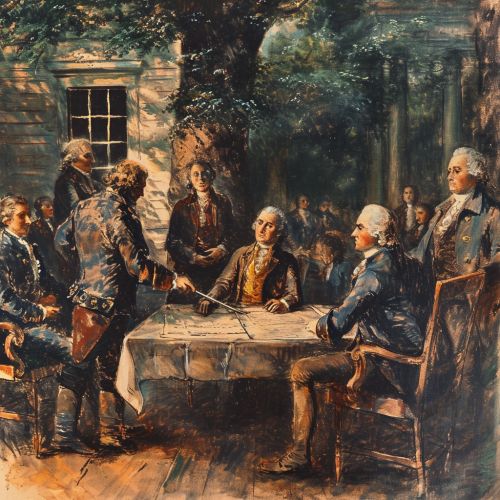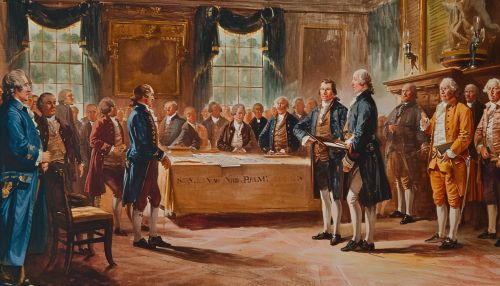New Jersey Plan
Historical Background
The New Jersey Plan, also known as the Small State Plan or the Paterson Plan, was a proposal for the structure of the United States Government. It was presented by William Paterson at the Constitutional Convention in 1787. The plan was a response to the Virginia Plan, which called for two houses of Congress, both elected with apportionment according to population. The less populous states were adamantly opposed to giving most of the control of the national government to the more populous states, and so proposed an alternative plan that would have kept the one-vote-per-state representation under one legislative body from the Articles of Confederation.


Provisions of the Plan
The New Jersey Plan was mainly focused on ensuring that small states got an equal share of representation in the government. The plan proposed the following provisions:
- The continuation of the unicameral Congress as established by the Articles of Confederation.
- Equal representation for each state in Congress, regardless of the state's population.
- The creation of a multi-person federal executive, to be chosen by Congress.
- The empowerment of Congress to regulate commerce and impose taxes.
- The creation of a federal judiciary, with judges appointed for life by the executive officials.
Reactions to the Plan
The New Jersey Plan was opposed by James Madison and the other authors of the Virginia Plan. They argued that the New Jersey Plan was too similar to the Articles of Confederation, which had proven to be ineffective. The larger states also opposed the New Jersey Plan, as they felt it was unfair for small states to have the same amount of representation as them.
Despite the opposition, the New Jersey Plan played a crucial role in shaping the final document of the United States Constitution. The Great Compromise, also known as the Connecticut Compromise, combined elements of both the New Jersey and Virginia Plans. It established a bicameral legislature, with the House of Representatives based on population and the Senate providing equal representation for each state.
Impact and Legacy
The New Jersey Plan, although not adopted in its entirety, had a significant impact on the structure of the U.S. government. The plan's insistence on equal representation for each state in the Senate is a principle that remains in the U.S. Constitution to this day. The plan also contributed to the system of checks and balances that is a fundamental aspect of the U.S. government.
